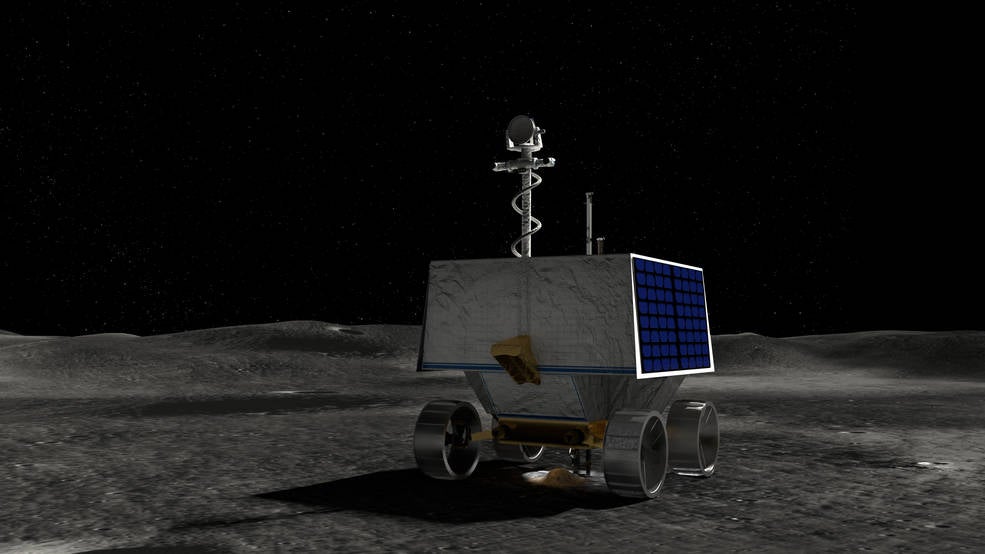Nasa selects landing site on moon for ice-hunting rover mission
Nobile Crater near Moon’s south pole is almost permanently covered in shadows, allowing ice to exist

Nasa has picked the Nobile Crater near the moon’s southern pole as the landing site for its Volatiles Investigating Polar Exploration Rover (VIPER), which will map and explore the terrain for water-ice.
The golf cart-sized rover will launch on a SpaceX Falcon-Heavy rocket for delivery to the moon in 2023 under Nasa’s Commercial Lunar Payload Services initiative, the US space agency noted in a statement on Monday.
According to Nasa, the rover mission seeks to unravel how the Moon got frozen water and other resources, where they came from, how they remained preserved for billions of years, how they escape, and where they go — laying the way for human exploration of the lunar surface in this decade.
Since the moon’s southern pole is one of the coldest areas in the solar system, Nasa said that prior missions have explored this region only using remote sensing instruments such as the space agency’s Lunar Reconnaissance Orbiter.
“Selecting a landing site for Viper is an exciting and important decision for all of us,” Daniel Andrews, Viper project manager, said.
“Years of study have gone into evaluating the polar region Viper will explore. Viper is going into uncharted territory — informed by science — to test hypotheses and reveal critical information for future human space exploration,” Dr Andrews added.
Nasa said it selected the Nobile Crater as the landing site for the upcoming mission due to its rover-accessible terrain and permanently shadowed areas, which are of scientific interest.
Using sensors and drills, the Nasa Viper will try to collect samples from at least three drill locations and characterise ice as well as other resources in these areas.
“Analysis of these samples from a variety of depths and temperatures will help scientists to better predict where else ice may be present on the moon based on similar terrain, allowing Nasa to produce a global resource map,” the space agency added in its statement.
Nasa added that it hopes the map and other findings from the Viper mission would allow scientists to better understand the distribution of resources on the moon and help inform future crewed missions.
Studies have shown that the selected landing site is an impact crater that was formed through a collision with another smaller celestial body. According to experts, this region of the moon is almost permanently covered in shadows, allowing ice to exist.
Nasa says the smaller, and more accessible, craters surrounding Nobile’s perimeter could also provide the robotic rover with “ideal locations” to look for ice and other resources.
In its currently planned trajectory, Viper would visit at least six sites of scientific interest, with some time to spare.
“Our evaluation of the landing site was driven by science priorities. We seek answers to some pretty complex questions and studying these resources on the moon that have stood the test of time will help us answer them,” said Anthony Colaprete, Viper lead project scientist at Nasa’s Ames Research Centre in Silicon Valley, California.
The US space agency selected the spot after evaluating viable rover traverse paths, and taking into account where Viper could use its solar panels to charge and stay warm during its 100-day journey.
“Once on the lunar surface, Viper will provide ground truth measurements for the presence of water and other resources at the Moon’s South Pole, and the areas surrounding Nobile Crater showed the most promise in this scientific pursuit,” Thomas Zurbuchen, associate administrator for science at Nasa Headquarters, said in a statement.
Join our commenting forum
Join thought-provoking conversations, follow other Independent readers and see their replies
Comments
Bookmark popover
Removed from bookmarks